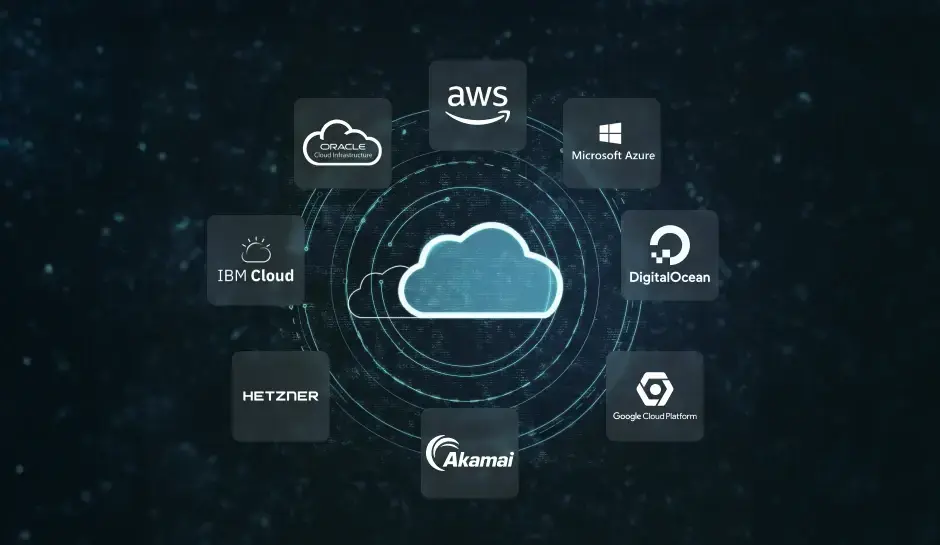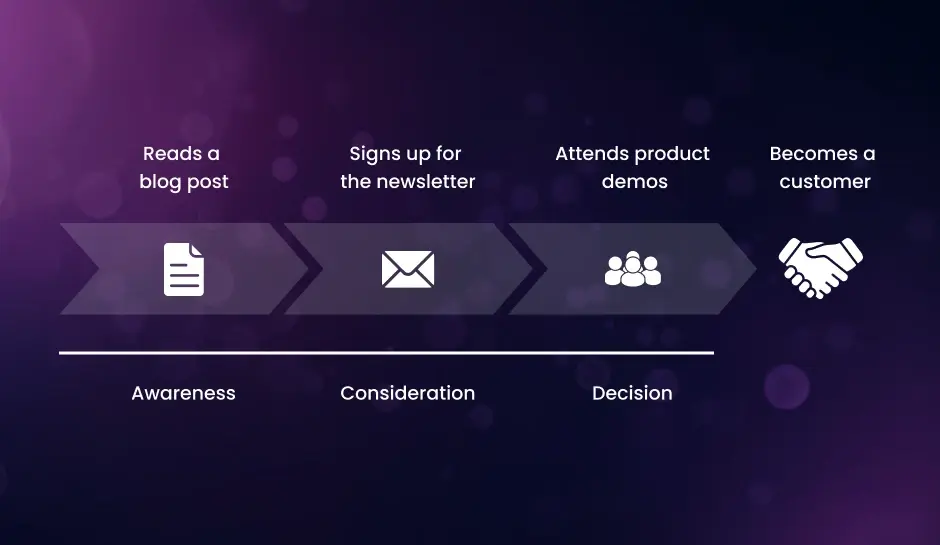
Why is 2023 the Year to Shift to Revenue-Focused Marketing?
In the aftermath of Covid-19, marketing's influence on enterprise-wide digital transformation has increased exponentially. CMOs now, more than ever, are under pressure from C-suites to prove the value of marketing.
In their journey to revenue-focused marketing, CMOs face many challenges—marketing data that resides in silos, incomplete campaign tracking, no single system for assembling touchpoint insights, a complex martech and sales stack, and more. Per Gartner’s Chief Marketing Officer Q4 report, an average of 64% of martech leaders agree that their team lacks technical skills to integrate and operate their martech stack and receives insufficient support to increase usage of their martech stack.
In the aftermath of Covid-19, marketing’s influence on enterprise-wide digital transformation has increased exponentially. CMOs now, more than ever, are under pressure from C-suites to address these gaps, do more with less, and shift to revenue-focused marketing. So it’s no surprise that on average, CMOs are the shortest-tenured members of the C-suite.
The Case for Shifting to Revenue-Focused Marketing
With marketing budgets coming under intense scrutiny, marketing’s goal has been shifting from lead-focused to revenue-focused. One of the key benefits of revenue-focused marketing is that it allows businesses to measure the ROI of their marketing efforts and identify areas for improvement. By focusing on revenue, businesses can make informed decisions about where to allocate their marketing resources and ensure that they are maximizing their return on investment.
Revenue-focused marketing can be particularly effective for businesses that have a clear understanding of their target audience and are able to effectively segment and target their marketing efforts. It can also be useful for businesses that are looking to drive growth and increase their revenue over time.
All of this requires the ability to stitch together disparate marketing channels to derive actionable insights that help take informed decisions.
As expectations from CMOs increase, their reliance on data and analytics to quantify growth and ROI has become top priority. Gartner’s latest CMO spend survey outlines that data and analytics, and marketing technology are the top strategic areas for CMOs.
So where does the road begin for CMOs?
How Should CMOs Approach Revenue-Focused Marketing?
The post-Covid world has thrown its share of complexities. Today’s CMOs face far bigger challenges than their predecessors due to the fragmentation of customer segments and the growing number of touchpoints. In such a scenario, CMOs must embrace an industrious approach to adopt revenue-focused marketing.
- Knowing Customers Is Vital:
- Communicating With C-Suites In Their Language
- Adopting a Center-Brain Mentality
- Focusing on Customer Lifecycle
- Choosing The Right Channels
– For any marketing campaign to succeed, knowledge about customers is vital. Every marketer knows it, but the buck always stops with the CMO when understanding customers’ needs, tastes, preferences, and aspirations. The thrust should be on data and analytics to gather a 360-degree perspective on the customers. CMOs need to use historical business data and data from third-party sources and put them through the latest market research tools to extract deep insights into customers and their buying habits. This knowledge arms CMOs with the information to leverage revenue-focused marketing.
– C-Suites don’t necessarily understand the jargon of CMOs. It is a universal truth that boardrooms love numbers, which is the best way to explain complex marketing concepts. For revenue-focused marketing to work, CMOs must communicate their marketing concepts and insights in a language that other C-Suites understand. They need to dive deep into data and show engagement, conversion, and growth opportunities in stats and figures.
– In the past, marketing was seen only from a creative perspective and perceived as a right-brain function. However, CMOs need to quantify the creative process with data and return on investments which involves the left-brain. Thus in 2023, CMOs will need to strike the right balance between creativity and data-driven intelligence, which calls for embracing a center-brain mentality.
– Marketing isn’t a one-time exercise but a continuous process. CMOs thus need to focus on customers throughout the lifecycle of the relationship. In revenue-focused marketing, CMOs must follow their customers, from activation and nurturing to reactivation. Data and analytics play a key role in understanding their engagement with the brand across different touchpoints.
– Since CMOs need to do more with less, choosing marketing channels becomes crucial. Identifying the best marketing channels and allocating a higher share of the budget toward them is essential. It helps businesses grab the low-hanging fruits and improve ROI.
Understanding Revenue Focused Marketing
Revenue Focused Marketing is a cutting-edge concept that has revolutionized the way businesses approach their marketing strategies. It goes beyond traditional marketing approaches to prioritize generating revenue as the ultimate goal.
A. Explaining the concept of revenue-focused marketing
Revenue Focused Marketing is a strategic approach that involves aligning marketing efforts towards driving revenue growth and maximizing return on investment. This approach focuses on identifying and targeting the most profitable customer segments and optimizing marketing campaigns to optimize revenue generation.
B. Differentiating revenue-focused marketing from traditional marketing approaches
Unlike traditional marketing approaches that may emphasize brand awareness or lead generation, revenue-focused marketing puts revenue generation at the forefront. It shifts the focus from vanity metrics to measurable results, such as increasing sales and customer lifetime value.
Traditional marketing approaches often rely on mass advertising or broad-based campaigns, while revenue-focused marketing emphasizes precision targeting. By analyzing customer data and behavior, businesses can identify their most valuable customers and tailor their marketing efforts to maximize revenue from these segments.
C. Benefits of adopting a revenue-focused marketing approach
- Increased profitability
- Improved return on investment:
- Enhanced customer acquisition and retention
- Data-driven decision making
By prioritizing revenue generation, businesses can optimize their marketing strategies to drive more sales and increase profitability.
Revenue-focused marketing allows businesses to allocate their marketing budget more strategically, ensuring that resources are invested where they will generate the highest return.
By focusing on the most profitable customer segments, businesses can attract and retain high-value customers more effectively.
Revenue-focused marketing relies on data analysis and insights to guide marketing strategy. This leads to more informed decision making and better results.
Adopting a revenue-focused marketing approach can give businesses a competitive edge in today’s dynamic and fast-paced market. It enables businesses to align their marketing efforts directly with revenue goals, driving growth and long-term success.
Key Components of Revenue Focused Marketing
In order to implement a successful revenue focused marketing strategy, it is essential to focus on several key components:
A. Identifying and targeting the right audience
One of the most crucial aspects of revenue focused marketing is identifying and targeting the right audience. Understanding the demographics, needs, and preferences of your target market allows you to tailor your marketing efforts to reach the right people at the right time. By effectively segmenting your audience, you can deliver personalized and relevant messages that resonate with them, increasing the likelihood of conversions and revenue generation.
B. Effective brand positioning and value proposition
A strong brand positioning and value proposition are essential for revenue focused marketing. Clearly defining what sets your business apart from competitors and communicating the unique value that you offer to customers is key. By effectively positioning your brand and highlighting its value, you can attract and retain customers who are willing to pay a premium for your products or services, driving revenue growth.
C. Comprehensive customer segmentation strategies
Comprehensive customer segmentation strategies play a crucial role in revenue focused marketing. By dividing your customer base into specific segments based on characteristics such as demographics, behavior, or purchasing history, you can tailor your marketing efforts to meet the unique needs of each segment. This level of personalization enhances customer engagement and increases the likelihood of conversions and repeat purchases, ultimately driving revenue.
D. Utilizing marketing automation tools and software
Marketing automation tools and software can greatly enhance revenue focused marketing efforts. These tools automate repetitive tasks, streamline processes, and allow for more targeted and personalized communication with customers. By leveraging marketing automation, businesses can save time and resources while effectively nurturing leads, converting prospects into customers, and maximizing revenue generation.
E. Marketing ROI calculation and analysis
Measuring and analyzing marketing ROI is a critical component of revenue focused marketing. By quantifying the return on investment from various marketing initiatives, businesses can identify which strategies are most effective in driving revenue and make data-driven decisions to optimize marketing spend. Regularly analyzing marketing ROI enables businesses to allocate resources more effectively, invest in high-ROI activities, and continually improve revenue generation efforts.
Developing a Revenue Focused Marketing Strategy
In order to drive revenue and achieve business growth, it is essential to develop a comprehensive revenue focused marketing strategy. By following these key steps, you can create a roadmap that will guide your marketing efforts towards generating maximum revenue.
A. Conducting target audience analysis and profiling<
Understanding your target audience is crucial for developing a revenue focused marketing strategy. Conduct in-depth market research to gather insights about your audience’s needs, preferences, and buying behaviors. Define buyer personas to better understand your target audience and create highly targeted marketing campaigns.
B. Setting revenue-focused marketing goals and objectives
Clearly define your marketing goals and objectives in terms of revenue generation. Setting specific, measurable, attainable, relevant, and time-bound (SMART) goals will help you track and measure the success of your marketing strategies. Align your goals with your overall business objectives and keep them realistic to stay focused on revenue generation.
C. Strategies for enhancing sales growth
Identify strategies that focus on increasing sales revenue. This may include optimizing your sales processes, improving customer service, upselling and cross-selling techniques, and creating targeted promotional campaigns. Continuously analyze and optimize your sales strategy to maximize revenue.
<
D. Customer acquisition tactics for increased revenue
Develop strategies to attract new customers and expand your customer base. Utilize various marketing channels such as social media, content marketing, search engine optimization, and paid advertising to reach your target audience. Implement lead generation techniques to drive conversions and build a loyal customer base.
E. Lead generation techniques for revenue generation
Implement lead generation techniques to capture potential customers’ information and convert them into paying customers. This may include offering gated content, running email marketing campaigns, hosting webinars, or creating compelling landing pages. Focus on nurturing leads and guiding them through the sales funnel to maximize revenue.
F. Conversion optimization methods for maximizing revenue
Optimize your website and marketing collateral to increase conversion rates. Conduct A/B testing, improve website design and user experience, optimize call-to-action buttons, and create persuasive and compelling content. Continuously monitor and optimize your conversion rates to maximize revenue generation.
G. Pricing strategies to drive revenue growth
Develop pricing strategies that focus on driving revenue growth. Consider factors such as production costs, competitor pricing, value proposition, and profit margins. Experiment with different pricing models, discounts, and promotions to find the optimal pricing strategy that generates maximum revenue.
By following these steps and implementing a revenue focused marketing strategy, you can drive business growth, increase sales revenue, and achieve your overall business objectives.
Implementing Revenue Focused Marketing Campaigns
A. Factors to consider while planning revenue-focused marketing campaigns
When planning revenue-focused marketing campaigns, it is crucial to consider several factors to maximize your chances of success:
- Identify your target audience
- Define clear goals and objectives
- Determine your budget:
- Choose the right channels
- Monitor and measure results
Understanding your target audience is essential as it allows you to tailor your marketing campaigns to their specific needs and preferences.
Clearly articulate the goals and objectives you want to achieve with your marketing campaigns, whether it’s driving sales, increasing market share, or expanding customer base.
Allocating a budget for your revenue-focused marketing campaigns ensures you have the necessary resources to implement and execute your strategies effectively.
Selecting the most suitable marketing channels to reach your target audience is crucial for optimizing your campaign’s impact and driving revenue.
Implement a system to track and measure the success of your marketing campaigns so that you can identify areas for improvement and make data-driven decisions.
B. Crafting compelling marketing messages that drive revenue
Creating compelling marketing messages is an integral part of revenue-focused marketing campaigns. To ensure your messages drive revenue, keep the following tips in mind:
- Understand customer pain points
- Create a sense of urgency
- Highlight benefits and value
- Use social proof and testimonials
- Personalize your messaging
Identify the challenges and problems your target audience faces and tailor your messages to address those pain points effectively.
Use persuasive language and calls-to-action that urge your audience to take immediate action, emphasizing limited-time offers or exclusive deals.
Clearly communicate the benefits and value that your product or service offers, making it clear how it solves your customers’ problems and improves their lives.
Incorporate customer testimonials, case studies, or data that proves your product’s effectiveness and builds trust with your audience.
Customize your marketing messages to resonate with specific segments of your audience, using targeted language and addressing their unique needs.
C. Analyzing data to optimize marketing efforts and drive revenue
Data analysis plays a vital role in optimizing your marketing efforts to drive revenue. Consider the following steps:
- Set up tracking mechanisms
- Analyze customer engagement
- Segment your audience
- A/B testing
- Optimize landing pages
Implement tracking tools like Google Analytics to collect data on various aspects of your marketing campaigns, such as website traffic, conversions, and customer behavior.
Examine how your audience interacts with your marketing materials, such as click-through rates, email open rates, and social media engagement, to identify areas for improvement.
Divide your customer base into distinct segments based on demographics, behaviors, and preferences to refine your marketing strategies for each segment.
Conduct A/B tests to compare different variations of your marketing campaigns, such as different headlines or calls-to-action, to determine which ones yield better results and drive higher revenue.
Analyze the performance of your landing pages, making necessary tweaks to improve their conversion rates and maximize revenue generation.
D. Key performance indicators for measuring revenue-focused marketing success
Measuring the success of your revenue-focused marketing campaigns is essential to determine their effectiveness and make informed decisions for future strategies. Consider tracking these key performance indicators:
- Sales revenue
- Conversion rate
- Customer acquisition cost
- Customer lifetime value
- Return on Investment (ROI)
Measure the revenue generated directly from your marketing efforts, tracking the increase in sales and comparing it to your baseline.
Analyze the percentage of website visitors or leads that convert into paying customers, indicating the effectiveness of your marketing campaigns in driving revenue.
Calculate the cost required to acquire each new customer, monitoring this metric to ensure your marketing campaigns are cost-effective in generating revenue.
Determine the average value a customer brings to your business over their entire relationship with your company, allowing you to assess the long-term revenue potential.
Calculate the ROI of your marketing campaigns by comparing the revenue generated against the cost invested, providing insights into the profitability of your efforts.
Revenue Focused Marketing is a powerful strategy that can significantly impact a business’s success. By understanding the key components, developing a sound strategy, and implementing targeted campaigns, businesses can drive revenue growth and achieve their goals.
Throughout this content plan, we have highlighted the importance and benefits of revenue-focused marketing. It allows businesses to align their marketing efforts with their revenue goals, ensuring a focused and results-driven approach. With revenue-focused marketing, businesses can optimize their marketing spend, attract high-quality leads, and ultimately increase their bottom line.
To thrive in today’s competitive landscape, it is crucial for businesses to adopt revenue-focused marketing strategies. By doing so, they can stay ahead of the curve and maximize their return on investment. Embracing revenue-focused marketing will enable businesses to make data-driven decisions, focus on revenue-generating activities, and drive sustainable growth.
In conclusion, the key takeaways from this content plan include:
– Understanding the concept and importance of revenue-focused marketing
– Identifying the key components of revenue-focused marketing and how they contribute to success
– Developing a comprehensive revenue-focused marketing strategy
– Implementing effective revenue-focused marketing campaigns
– Learning from real-life case studies and examples
By following these key takeaways and adopting revenue-focused marketing strategies, businesses can achieve their revenue goals and drive long-term success.
Final Thoughts
2023 will be a crucial year for brands as the world comes out of the clutches of the Covid-19 pandemic. It will offer more room for businesses to price their products competitively and increase their market share. Increased business activity will result in increased competition, and CMOs will need to switch to revenue-focused marketing.
Ready to Become a Revenue-Focused Marketer?
DiGGrowth helps marketers get a clear picture of marketing effectiveness and do meaningful revenue attribution. An AI-driven no-code marketing analytics platform, DiGGrowth enables CMOs and the entire marketing team to increase their marketing ROI by 30% and do more with less.
Ready to get started?
Increase your marketing ROI by 30% with custom dashboards & reports that present a clear picture of marketing effectiveness
Start Free Trial
Experience Premium Marketing Analytics At Budget-Friendly Pricing.

Learn how you can accurately measure return on marketing investment.
Additional Resources
The Future of Marketing: How Predictive Lead and Account Scoring is Changing the Game
Can we, in this incredible marketing landscape driven...
Read full post postCloud Wars: A Comparative Analysis of Leading Cloud Vendors
How many companies are using cloud computing? Around...
Read full post postContent Marketing Attribution: Tracking Content Impact Across the Customer Journey
So, you've poured your heart into crafting the...
Read full post postFrequently Asked Questions
Revenue-focused marketing is an approach where the primary goal of marketing efforts shifts from lead generation to generating revenue. It involves measuring the return on investment (ROI) of marketing activities, making data-driven decisions, and allocating resources strategically to maximize revenue generation.
Revenue-focused marketing is important because it allows businesses to track the effectiveness of their marketing efforts in generating revenue. By focusing on revenue, businesses can identify areas for improvement, allocate resources efficiently, and make informed decisions to optimize their return on investment.
CMOs can adopt revenue-focused marketing by following these strategies:
Understanding Customers: Gather comprehensive insights about customers using data and analytics to tailor marketing strategies effectively.
Communicating with C-Suites: Present marketing concepts and insights in a language that other executives understand, using data and statistics to demonstrate engagement, conversions, and growth opportunities.
Embracing a Center-Brain Mentality: Strike a balance between creativity and data-driven intelligence, combining the right-brain creative perspective with left-brain quantification and ROI analysis.
Focusing on Customer Lifecycle: Continuously engage with customers throughout their relationship journey, leveraging data and analytics to understand their interactions and engagement across various touchpoints.
Choosing the Right Channels: Identify the most effective marketing channels and allocate resources accordingly to improve ROI and maximize results.
CMOs face several challenges in revenue-focused marketing, including:
Fragmentation of Customer Segments: Dealing with diverse customer segments and the need to tailor marketing strategies for each.
Growing Number of Touchpoints: Managing the increasing number of touchpoints across multiple channels and platforms, requiring effective coordination and data integration.
Lack of Technical Skills: Martech leaders often lack the necessary technical skills to integrate and operate their marketing technology stack, hindering their ability to derive actionable insights.
Insufficient Support: Many CMOs report inadequate support to increase usage and optimize their marketing technology stack, hampering their ability to leverage data and analytics effectively.
Pressure to Do More with Less: CMOs face pressure to achieve better results with limited resources, making resource allocation and ROI optimization crucial.
Data and analytics are vital in revenue-focused marketing as they provide the necessary insights to measure performance, make informed decisions, and optimize marketing strategies. By analyzing data, CMOs can understand customer behavior, track campaign effectiveness, identify growth opportunities, and quantify the impact of marketing initiatives on revenue generation.
 Subhadeep Bhattacharjee
Subhadeep Bhattacharjee  Akanksha Dass
Akanksha Dass 

